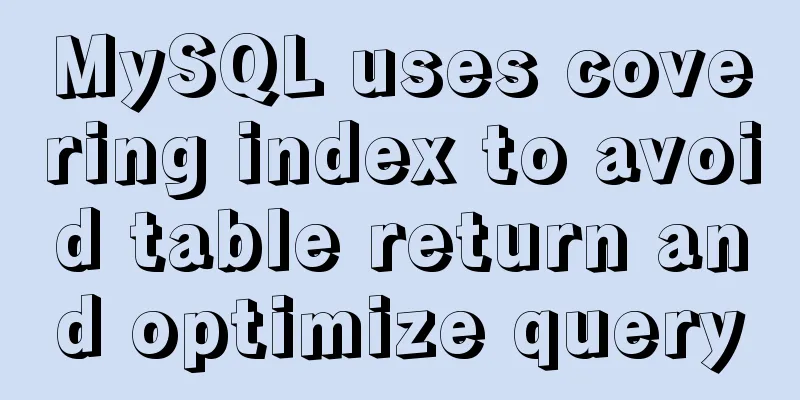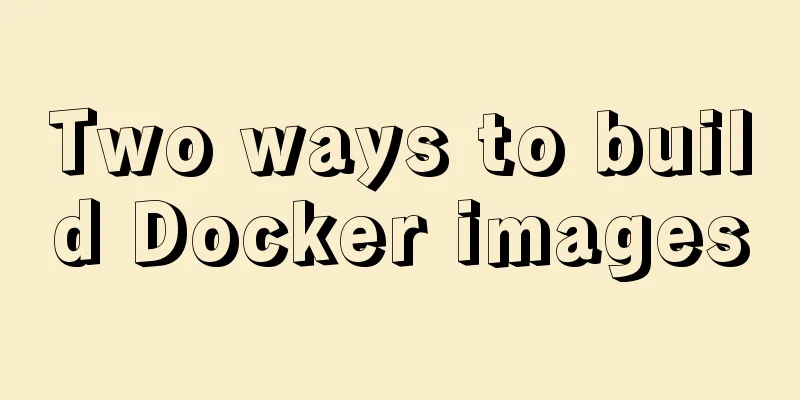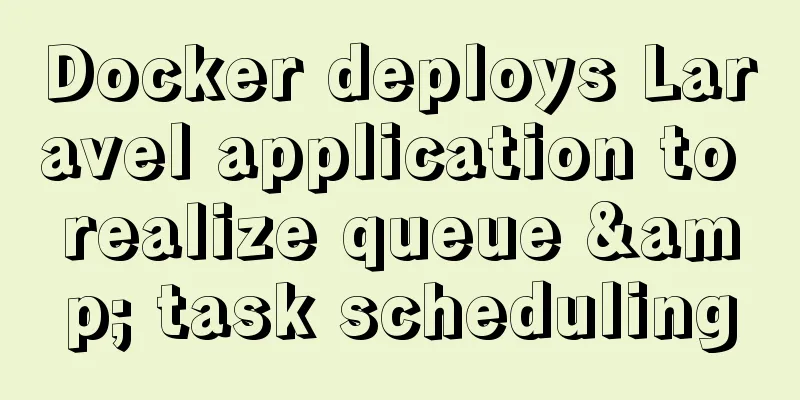Teach you how to use docker-maven-plugin to automate deployment

1. Introduction to docker-maven-pluginIn our continuous integration process, project engineering generally uses Maven to compile and package, and then generate images. By putting the images online, we can greatly improve the online efficiency, and at the same time, we can quickly and dynamically expand the capacity and quickly roll back, which is really convenient. The docker-maven-plugin plugin is designed to help us automatically generate images and push them to the warehouse through simple configuration in Maven projects. **effect: When compiling a project, a docker image can be automatically generated and pushed to a remote repository. You only need to configure it properly in the Maven configuration file pom.xml** Example 1 (automatically generating a docker image during compilation):1. Maven configuration:
<plugin>
<groupId>com.spotify</groupId>
<artifactId>docker-maven-plugin</artifactId>
<version>1.0.0</version>
<configuration>
<!--Note that imageName must conform to the regular [a-z0-9-_.], otherwise the build will not succeed-->
<imageName>myserver:v1</imageName>
<!-- The directory of the Dockerfile is specified, so you need to create a docker directory under the project's src/main and configure the Dockerfile file in its directory-->
<dockerDirectory>${project.basedir}/src/main/resources/docker</dockerDirectory>
<skipDockerBuild>false</skipDockerBuild>
<!-- The contents of resources will be copied to dockerDirectory (that is, the build context) -->
<resources>
<resource>
<targetPath>/</targetPath>
<directory>${project.build.directory}</directory>
<include>${project.build.finalName}.jar</include>
</resource>
</resources>
</configuration>
</plugin>
2. Then in the project's src\main\resources\docker (the dockerDirectory directory configured above), create a file named Dockerfile with the following content: FROM java:8 MAINTAINER blue ADD mydocker-0.0.1-SNAPSHOT.jar mydocker.jar ENTRYPOINT ["java", "-jar", "/mydocker.jar"] 3. Set system environment variables to specify the host and port of the docker daemon that needs to be connected. As mentioned earlier, docker is a C/S architecture, docker-maven-plugin plays the role of client, and the server needs environment variables to specify
4. Execute mvn clean install docker:build. After the project is compiled, the image is automatically built. Execute docker images to check whether the image exists:
Example 2 (pushing the image to the warehouse, based on Example 1):1. Open the Maven configuration file setting.xml and add the warehouse account information:
<servers>
<server>
<id>docker-hub</id>
<username>blueiii</username>
<password>xxxx</password>
<configuration>
<email>[email protected]</email>
</configuration>
</server>
</servers>2. Modify the pom.xml file, imageName must be consistent with the warehouse path: <imageName>blueiii/mydocker:v1</imageName> 3. Modify the pom.xml file and add the following configuration <pushImage>true</pushImage> <serverId>docker-hub</serverId> <registryUrl>https://hub.docker.com/</registryUrl> 4. Also execute mvn clean install docker:build to automatically build the image and upload it to docker hub:
This is the end of this article about how to use docker-maven-plugin to automate deployment. For more information about docker maven plugin automated deployment, please search for previous articles on 123WORDPRESS.COM or continue to browse the following related articles. I hope you will support 123WORDPRESS.COM in the future! You may also be interested in:
|
<<: Correct way to write empty links to prevent page jumps after clicking a href # problem
>>: How to solve the problem of left alignment of the last line in flex layout space-between
Recommend
How to remove the underline of a hyperlink using three simple examples
To remove the underline of a hyperlink, you need t...
How to install mysql in docker
I recently deployed Django and didn't want to...
Implementation steps for installing RocketMQ in docker
Table of contents 1. Retrieve the image 2. Create...
A brief discussion on the display modes of HTML tags (block-level tags, inline tags, inline block tags)
During today's lecture, I talked about the di...
How to use selenium+testng to realize web automation in docker
Preface After a long time of reading various mate...
Solution for installing opencv 3.2.0 in Ubuntu 18.04
Download opencv.zip Install the dependencies ahea...
RGBA alpha transparency conversion calculation table
Conversion between rgba and filter values under...
Summary of MySQL 8.0 Online DDL Quick Column Addition
Table of contents Problem Description Historical ...
How to dynamically add a volume to a running Docker container
Someone asked me before whether it is possible to...
A brief introduction to the command line tool mycli for operating MySQL database
GitHub has all kinds of magic tools. Today I foun...
Detailed example of reading speed of js objects
1. Accessing literals and local variables is the ...
Learning about UDP in Linux
Table of contents 1. Introduction to UDP and Linu...
Detailed explanation of three ways to set borders in HTML
Three ways to set borders in HTML border-width: 1...
Specific use of exception filter Exceptionfilter in nestjs
Speaking of Nestjs exception filter, we have to m...
Solutions to problems related to software package dependency reporting during installation in Linux
Table of contents background 1) Enable the keepch...












